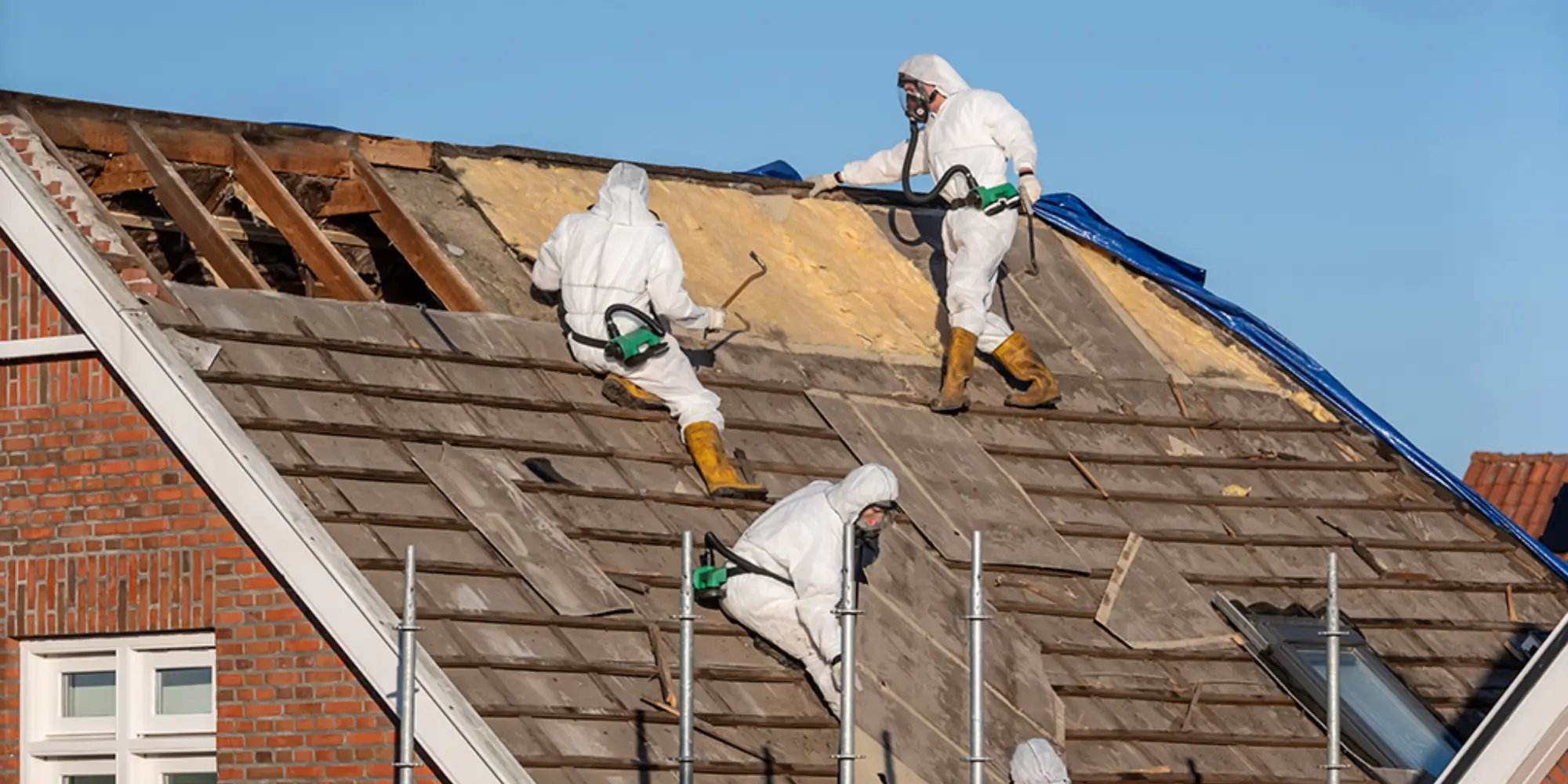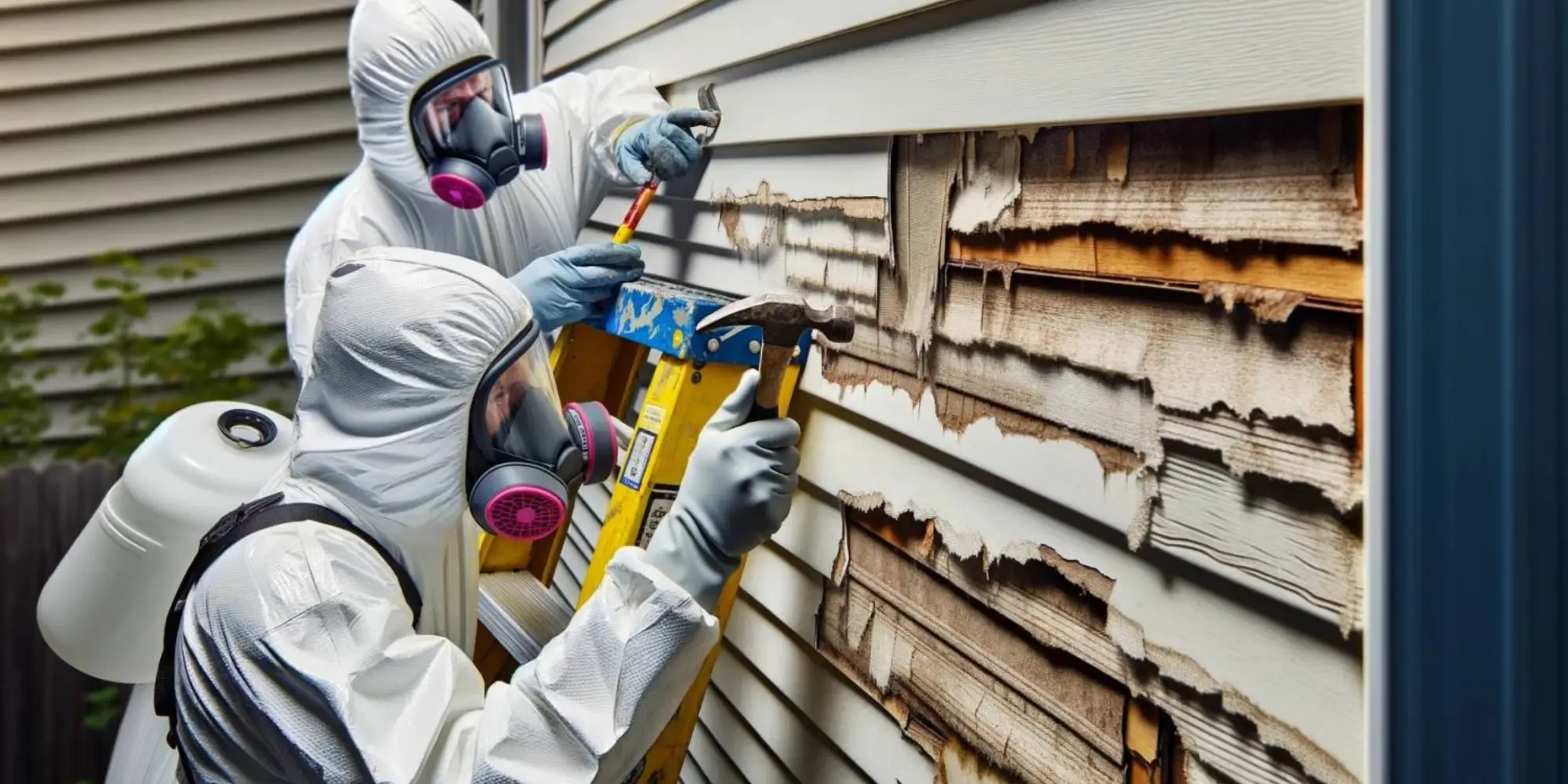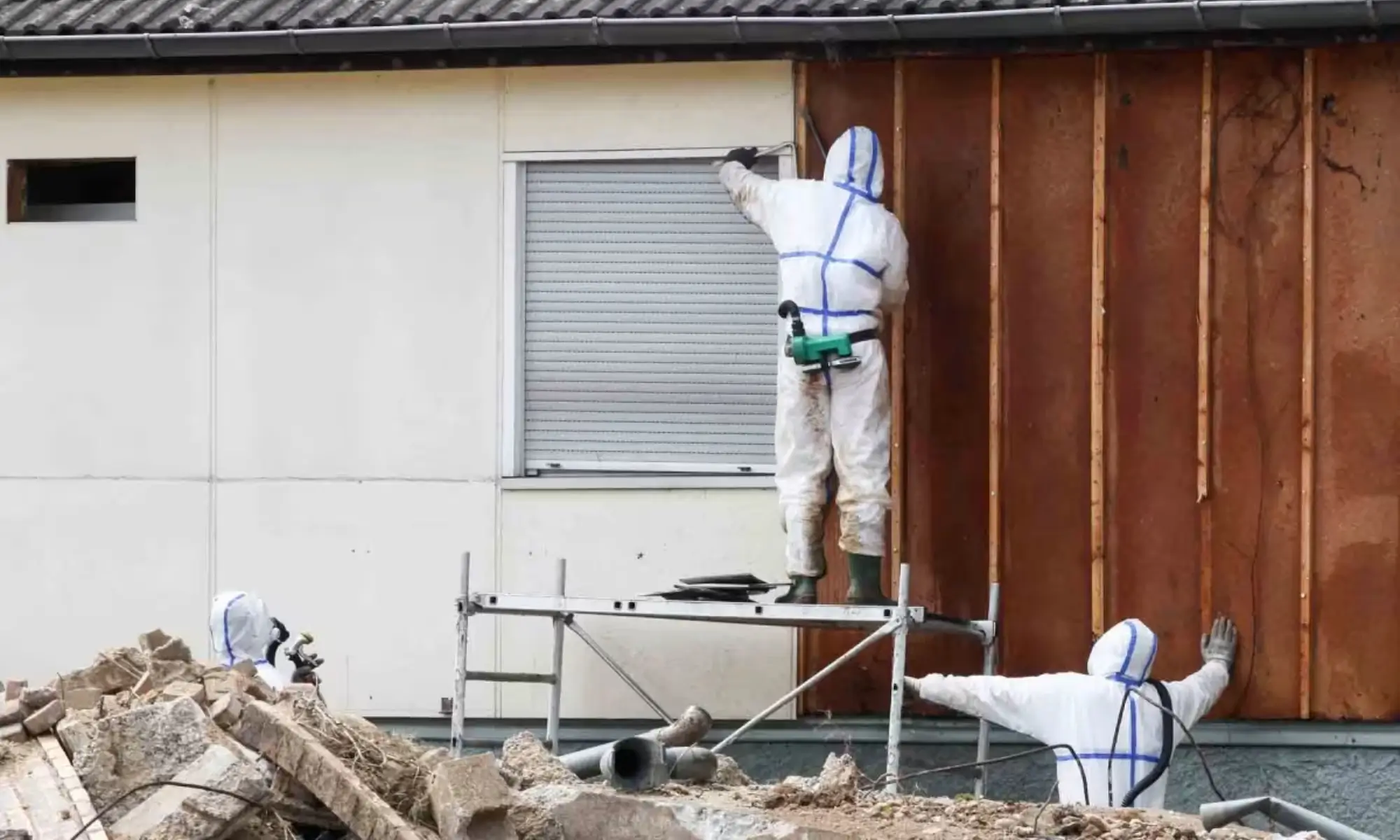Asbestos siding was a popular building material used in homes and other structures from the early 1900s through the 1970s. Renowned for its durability, fire resistance, and insulating properties, asbestos siding was a go-to choice for many builders. However, the health risks associated with asbestos have since become well-known, leading to questions about the safety of existing asbestos siding on homes.
In this comprehensive guide, we’ll explore what asbestos siding is, the dangers it poses, how to identify it, and what steps you should take if your home has asbestos siding.

What Is Asbestos Siding?
Asbestos siding is a type of exterior cladding made from a mixture of Portland cement and asbestos fibers. The asbestos fibers were added to the cement to reinforce the material, making it stronger and more durable. This combination resulted in a siding that was not only robust but also resistant to fire, rot, and insects.
Origins of Asbestos Siding
The use of asbestos in building materials began in the early 20th century. In 1905, the Johns-Manville company developed asbestos cement, which quickly gained popularity. By 1910, products like “Asbestoside” were available for purchase, marketed for their fireproof qualities and low maintenance requirements. Asbestos-containing siding and other building materials continued to be used extensively until the early 1970s.
How to Identify Asbestos Siding
Identifying asbestos siding can be challenging, especially since it can resemble other types of siding. Here are some characteristics that may indicate the presence of asbestos siding:
- Shingle Form: Asbestos siding often comes in the form of shingles, usually measuring about 12 by 24 inches. These shingles may have low vertical grooves or a wavy pattern at the bottom edge.
- Nail Punctures: The shingles are typically nailed around the perimeter, with each row overlapping the one below it.
- Fibrous Edges: If a shingle is broken, the edge may appear rough, flaky, and fibrous.
- Sound Test: Tapping the siding with a hard object like a hammer may produce a sharp, ringing sound similar to tapping ceramic tile.
- Manufacturing Codes: Check the back of the siding for any manufacturing codes or labels, which can help trace its origin and composition.
- Age of the Home: Homes built between the 1920s and the 1960s are more likely to have asbestos siding.
Professional Inspection
The only definitive way to determine if siding contains asbestos is to have it tested by a certified professional. They can safely collect a sample and analyze it in a laboratory setting.

Dangers of Asbestos Siding
Asbestos fibers are hazardous when they become airborne and are inhaled. The health risks associated with asbestos exposure include:
- Asbestosis: A chronic lung disease caused by inhaling asbestos fibers, leading to lung tissue scarring and breathing difficulties.
- Lung Cancer: Prolonged exposure increases the risk of developing lung cancer, especially for smokers.
- Mesothelioma: A rare but aggressive cancer affecting the lining of the lungs, heart, or abdomen.
When Is Asbestos Siding Dangerous?
Asbestos siding is generally considered safe if it’s in good condition and left undisturbed. The danger arises when the siding is damaged, broken, or disturbed through activities like drilling, cutting, sanding, or demolition. These actions can release asbestos fibers into the air, posing a health risk.
Should Asbestos Siding Be Removed?
The decision to remove asbestos siding depends on several factors:
Reasons to Remove
- Damage: If the siding is cracked, crumbling, or otherwise deteriorating.
- Renovations: Major home renovations or additions may necessitate removal.
- Property Value: Removing asbestos siding can increase home value and make it more attractive to potential buyers.
- Peace of Mind: Eliminating the potential hazard can provide reassurance.
Reasons to Leave It In Place
- Good Condition: If the siding is intact and undamaged, it may be safer to leave it alone.
- Cost: Removal can be expensive, ranging from $50 to $150 per square foot.
- Risk of Exposure: Improper removal can release more fibers than leaving it undisturbed.
Alternatives to Removal
- Encapsulation: Covering the existing asbestos siding with new siding materials, such as vinyl or fiber-cement siding. This method seals in the asbestos without disturbing it.
- Repair: Damaged areas can sometimes be repaired without removing all the siding.

Handling Asbestos Siding Safely
If you decide to remove or work with asbestos siding, it’s crucial to follow safety protocols:
- Hire Professionals: Engage a certified asbestos abatement company that has the equipment and expertise to handle and dispose of asbestos safely.
- Permits and Regulations: Check local regulations, as permits may be required for removal and disposal.
- Avoid DIY Removal: Do not attempt to remove asbestos siding yourself. Improper handling increases the risk of exposure.
Is It Safe to Live in a House with Asbestos Siding?
Yes, it is generally safe to live in a house with asbestos siding as long as the material is in good condition and not disturbed. Regular inspections can help ensure the siding remains intact. If maintenance is required, avoid any activities that could damage the siding.
What Does Asbestos Siding Look Like?
Asbestos siding can vary in appearance, but some common features include:
- Size and Shape: Typically shingle-shaped, measuring about 12 by 24 inches.
- Texture: May have a smooth surface or mimic wood grain patterns.
- Color: Often grayish-white but can be painted.
- Edges: Broken pieces reveal a fibrous, flaky texture.
It’s important to note that modern fiber-cement siding can resemble asbestos siding but does not contain asbestos fibers.

Frequently Asked Questions
Conclusion
Asbestos siding was a widely used building material due to its durability and fire-resistant properties. While it poses health risks when damaged or disturbed, asbestos siding in good condition does not necessarily need to be removed. Homeowners should regularly inspect their siding for signs of wear and consult professionals if any issues arise.
If you’re considering buying a home with asbestos siding or are concerned about existing siding, it’s advisable to seek professional guidance. Proper handling and awareness can mitigate risks and ensure the safety of you and your family.
Disclaimer: This article is for informational purposes only and is not a substitute for professional advice. If you suspect your home has asbestos siding, consult a certified professional for assessment and guidance.

